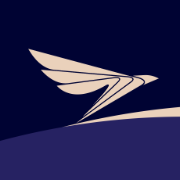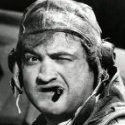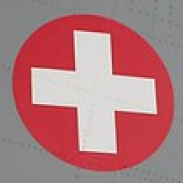-
Posts
3,207 -
Joined
-
Last visited
-
Days Won
272
Thunnus last won the day on November 24 2023
Thunnus had the most liked content!
Profile Information
-
Gender
Male
-
Location
Carlsbad, CA
-
 JayW reacted to a post in a topic:
Eduard 1/48 Hawker Tempest II
JayW reacted to a post in a topic:
Eduard 1/48 Hawker Tempest II
-
 TankBuster reacted to a post in a topic:
Eduard 1/48 Hawker Tempest II
TankBuster reacted to a post in a topic:
Eduard 1/48 Hawker Tempest II
-
 TankBuster reacted to a post in a topic:
Eduard 1/48 Hawker Tempest II
TankBuster reacted to a post in a topic:
Eduard 1/48 Hawker Tempest II
-
 LSP_Ray reacted to a post in a topic:
Eduard 1/48 Hawker Tempest II
LSP_Ray reacted to a post in a topic:
Eduard 1/48 Hawker Tempest II
-
 CRAZY IVAN5 reacted to a post in a topic:
Fw190D-11/12/13 etc Motorkanone
CRAZY IVAN5 reacted to a post in a topic:
Fw190D-11/12/13 etc Motorkanone
-
 LSP_Kevin reacted to a post in a topic:
Eduard 1/48 Hawker Tempest II
LSP_Kevin reacted to a post in a topic:
Eduard 1/48 Hawker Tempest II
-
Going from 1/32 to 1/48 is hard enough... can't imagine transitioning from 1/18!!! The parts with PE enhancements as well as the parts molded in clear plastic have been given a coat of Mr Primer Surfacer 1000 including some scratchbuilt levers on the throttle quadrant. The other cockpit parts are here including the footrest, tubular sidewall structure, seat and rear cockpit bulkhead. The fuselage interior has some molded detail in the cockpit area.
-
 Thunnus reacted to a post in a topic:
Eduard 1/48 Hawker Tempest II
Thunnus reacted to a post in a topic:
Eduard 1/48 Hawker Tempest II
-
 Thunnus reacted to a post in a topic:
Eduard 1/48 Hawker Tempest II
Thunnus reacted to a post in a topic:
Eduard 1/48 Hawker Tempest II
-
 Thunnus reacted to a post in a topic:
Eduard 1/48 Hawker Tempest II
Thunnus reacted to a post in a topic:
Eduard 1/48 Hawker Tempest II
-
 Shoggz reacted to a post in a topic:
Eduard 1/48 Hawker Tempest II
Shoggz reacted to a post in a topic:
Eduard 1/48 Hawker Tempest II
-
 JayW reacted to a post in a topic:
Eduard 1/48 Hawker Tempest II
JayW reacted to a post in a topic:
Eduard 1/48 Hawker Tempest II
-
 JayW reacted to a post in a topic:
Eduard 1/48 Hawker Tempest II
JayW reacted to a post in a topic:
Eduard 1/48 Hawker Tempest II
-
 Alex reacted to a post in a topic:
Eduard 1/48 Hawker Tempest II
Alex reacted to a post in a topic:
Eduard 1/48 Hawker Tempest II
-
Thanks guys! I wish Eduard would do 1/32 as well. I love their range and quality of 1/48 scale WW2 fighters but frankly, the scale is just too small for my preferences. I enjoy working on LSPs the best. I've cobbled together two versions of the instrument panel. One is pre-painted Eduard photoetch panels glued onto the kit plastic parts (right). The other is the kit plastic parts with the molded detail and the kit decals placed over it (left). It took a bit of effort to get the decal to conform to the molded detail using multiple applications of Microsol, Solvaset, a sharp knife and physical pressure. The remaining silvering around the instruments was carefully painted out. The Eduard version is clearly superior in terms of detail but the purplish grey color, which isn't apparent in the picture below, bugs me. Haven't decided yet but I'm leaning towards using the decal version because I like the color better. I'm slowly working on the cockpit components. It's not as straightforward as it could be since some of the Eduard PE is pre-painted, which means I have to pre-paint some of the plastic parts before the PE is glued on. But it's getting there. In the meantime, I've taken the time to open up the fuselage openings aft of the engine. I'm not going to do too much extra detailing in the cockpit but I didn't like the throttle quadrant so I've cut off the levers and will make new ones.
-
 Thunnus reacted to a post in a topic:
Eduard 1/48 Hawker Tempest II
Thunnus reacted to a post in a topic:
Eduard 1/48 Hawker Tempest II
-
 Thunnus reacted to a post in a topic:
Eduard 1/48 Hawker Tempest II
Thunnus reacted to a post in a topic:
Eduard 1/48 Hawker Tempest II
-
 Thunnus reacted to a post in a topic:
Eduard 1/48 Hawker Tempest II
Thunnus reacted to a post in a topic:
Eduard 1/48 Hawker Tempest II
-
 Thunnus reacted to a post in a topic:
Eduard 1/48 Hawker Tempest II
Thunnus reacted to a post in a topic:
Eduard 1/48 Hawker Tempest II
-
Wrapping up with the kit contents, the majority of the clear parts are held on Eduard's signature circular sprue. Even though this circular sprue was held in its own bag, both the windscreen and the bubble canopy were detached and floating in the bag. Thankfully, there does not appear to be any damage to the canopy parts. The supplied photoetch includes pre-painted parts for the cockpit and some unpainted detail parts as well. Markings for six aircraft are supplied on this huge decal sheet. Biggest I've encountered and wouldn't fit on my desktop scanner. These are the newer style decals from Eduard that feature a removable clear carrier, similar to the wet transfer decals from HGW and 1ManArmy. I am planning to do a natural metal bird from Royal Indian Air Force circa 1947. Construction will start in the cockpit and my attention is drawn to the three ways Eduard provides for the instrument panel. The first version has molded detail on the instrument faces that are meant to be painted. The second version provides partially flat faces for the panels that are meant to be used with the kit-supplied decals for the instrument faces. The third version uses the pre-painted phototetch parts. Since the molded detail version lacks the raised instrument dials, I thought I would morph the three version into two alternatives. 1: Using the decals on the molded detail parts and 2: removing all of the raised details on the 2nd version and applying the photo-etch parts onto that. Same purplish grey that Eduard seems to use on ALL of its instrument panels. I'll have to double check to see if the decals actually line up with the molded details as I notice some differences between all three instrument panel version. But I've prepped Version 2 by removing all of the raised details.
-
Coming off a long break from modeling, I momentarily jumped back onto my Spitfire XIVe conversion but now as I await some additional 3D-printed parts from Laminar Flow Design, I am going to start something new and a little different. Straying from my normal WW2 fighter subjects, I am going to do a post-war bird... I chose this kit for a few different reasons. First of all, Eduard makes some REALLY good kits and I was interested in sampling one of their more recent releases. At 1/48 scale, this is smaller than my normal 1/32 subjects and it SHOULD be a quicker build. And finally, I've always liked the Tempest and this radial engine version has a connection to another favorite aircraft of mine: the Fw 190. Eduard's Profipack editions come with a few extras including photoetch, canopy masks and sometimes resin. No resin in this particular release but I picked up some to add some detail. As usual, before I start a build, I like to take a photographic tour of the kit contents. In addition to being a possible interest to readers, it gives me a chance to get familiar with the kit parts. Eduard packs multiple sprues into bags, which allows parts to rub together and cause some damage. My copy had some superficial scratching on the larger parts and a few detached parts. Below are the wing parts for the Tempest II, which was bagged with the fuselage sprue. Unlike some manufacturers, Eduard is not stingy when it comes to molding different variants. So thankfully, there are no problematic inserts for the leading edge intakes and we get a brand new wing for the Tempest II. Eduard molding is superb. I really wish that they would do some 1/32 scale kits. The fuselage parts are also Tempest II-specific and reduces the amount of joints that would need to be corrected if they used a modular approach like Special Hobby did on their 1/32 Tempest releases. The next four sprues were packaged into a single plastic bag and resulted in a number of detached parts. Given that this sprue has many Tempest II-specific parts such as the radial engine and cowling ring, I assume that the prop here is the one that I'll be using. That radial engine is not much to talk about being a very sparse representation of the cylinders. But given the very tight clearances between the spinner and the NACA cowling, this is probably more than adequate. Similarities to the Fw190A are not coincidental and a captured Focke Wulf was closely examined in conjunction with the Tempest II design. The exhaust tips are solid, unfortunately. And since they are square in shape, not circular, they would be a royal pain to try and hollow out. That is why I opted to buy the Eduard Brassin replacements. Two more props on this sprue but I'm guessing these are for the Mark V or VI. Three loose wheels on this sprue. I am going to use Barracuda block tread resin replacement tires on this build. The tail fins on the rockets are quite thick. I'm not sure if the underwing rockets are appropriate for the aircraft that I'm modeling but I picked up Eduard Brassin replacements for the rockets just in case. The final grey sprue holds all of the tiny parts. Even without the addition of aftermarket stuff, you get a very detailed model! To Be Continued...
-

Tamiya 1/32 Spitfire XIVe Conversion (Laminar Flow Design)
Thunnus replied to Thunnus's topic in Works in Progress
Thanks Kevin! It's great to be back! Thanks John! I totally agree about the LFD components... great upgrade! Thank you Troy! Appreciate the welcome! Thanks Jay! Gotta catch up on yours and all of the other great builds here! Thank you Matt! Winter was very good to me but its good to be back on the modeling bench again! Thank you! My trip to Central Asia is always a high point of the year so yes, it was well spent. In addition to the mental decompression and jetlag, I have to sort through 4,000 photos and process them, culminating in a slideshow that I prepare and post on Youtube. Thank you Ernest! I'm gonna put this one on temporary hold as I wait for some replacement parts from Mathieu at Laminar Flow Design. In the meantime, I am going to take my talents to 1/48 scale and start a new project on the Non-LSP board. -
 Thunnus reacted to a post in a topic:
Tamiya 1/32 Spitfire XIVe Conversion (Laminar Flow Design)
Thunnus reacted to a post in a topic:
Tamiya 1/32 Spitfire XIVe Conversion (Laminar Flow Design)
-
 Thunnus reacted to a post in a topic:
Tamiya 1/32 Spitfire XIVe Conversion (Laminar Flow Design)
Thunnus reacted to a post in a topic:
Tamiya 1/32 Spitfire XIVe Conversion (Laminar Flow Design)
-
 Thunnus reacted to a post in a topic:
Tamiya 1/32 Spitfire XIVe Conversion (Laminar Flow Design)
Thunnus reacted to a post in a topic:
Tamiya 1/32 Spitfire XIVe Conversion (Laminar Flow Design)
-

Tamiya 1/32 Spitfire XIVe Conversion (Laminar Flow Design)
Thunnus replied to Thunnus's topic in Works in Progress
Hello LSP community! It's been a while since I've spent meaningful time at my modeling bench but I'm getting that urge again. Not sure what project I want to continue on at the moment but as I'm contemplating, I thought I'd crack open the Spitfire build again and try to re-orient myself. I left off exploring the 3D-printed cockpit upgrades from Laminar Flow Designs. I'm trying to mix the Tamiya XVIe cockpit parts with the LFD XIVe-specific upgrades and adding Barracuda resin on top of that, where applicable. As usual, I am not going to claim great accuracy with what I'm doing but will use the resources that I have available to make a reasonable facsimile of an XIVe cockpit. One of these resources has been previous Spitfire builds, most notably NGBZ's VIII build from 2020. From what I know, the XIVe cockpit is based on the VIII and Gary's build does a great job of capturing some of those differences with some help of Vincent K's past scratchbuilding work. Of course, there are differences between the XIVe and VIII so I have to pay attention to that too. I started modifying the Tamiya kit parts to accommodate the LFD upgrades. The biggest change is the big electrical box that needs to be added to the port sidewall. Some surgery is needed on the kit part to make room for the electrical box. After making most of the necessary modifications like moving the voltage regulator, making a jackplate for the gun camera film footage indicator out of sheet styrene and filling in ejector pin marks, I've tacked the rest of the port sidewall components into place just to get a feel for the wiring that I'll be adding later. There is a big fuel tank directly behind the seat, which will block the view off from the seat bulkhead to the rear. This will limit visibility into the rear bottom area of the cockpit so I'm not going to bother with trying to replicate the flying control linkage wires that run under the pilot, which I was previously considering. I've done similar modifications to the starboard side, which features a resin sidewall replacement from Barracuda. My plan is to separate the cockpit into subassemblies... the port and starboard sides as presented above, the instrument panel/cockpit floor and the seat/rear bulkhead. Once these subassemblies are assembled and painted separately, I'll put them together as the fuselage halves come together. -

Fw190D-11/12/13 etc Motorkanone
Thunnus replied to Onspring's topic in Aviation Discussion & Research
And try to pick up the JaPo Dora books as well! Different but equally good, IMO! -

Fw190D-11/12/13 etc Motorkanone
Thunnus replied to Onspring's topic in Aviation Discussion & Research
I believe there are differences between the D-13 and the Ta152H as it pertains to the gun mounted within the engine. The Ta152H had a 30mm Mk108 and the D-13 had a 20mm MG151. The Z-M Ta152H kit depicts the 30mm ammo cannister as wrapping around the rear breech of the Mk108 cannon, directly behind the engine. The ammo cannister on the D-13 was located in the empty compartment normally occupied by the twin MG131 above the engine on the D-9. This is a photo of Volume 2 of Jerry Crandall's excellent Dora book set showing the restored D-13. I hope that helps! -
Thanks guys! I appreciate the comments on this build! Definitely love the Dora and may have to just build another one. But maybe by then, Z-M will have released a new tool Dora???
-

1/32 Revell Me262B-1/U-1 Nachtjager Red 10
Thunnus replied to Thunnus's topic in Ready for Inspection
Thank you Martin! Thank you Marc! One of the small details that I appreciated on the Revell 262 kit versus the Trumpeter version is ability to snake the brake lines from the landing gear into the wheel wells. This type of continuity helps the illusion of realism greatly. And yeah, it's difficult to imagine the stress/adrenaline strapping into the world's fastest fighter and hurtling towards heavily armed bomber aircraft in the pitch black of night. Thank you very much! Thank you Nikola! Appreciate you checking in on this archived build! -
Thank you much for your comment! I appreciate it greatly! I just got back from my annual trip to Central Asia (Kazakhstan/Kyrgyzstan) so I've been really busy going through my 3,000+ pics and processing them via Lightroom. I still need to cobble together a slideshow to present to my church, which I hope to complete by this weekend. Sometime after that, I hope to get back on the modeling bench. Continue my unfinished projects? Or start a new one? Not sure but one way or another, I hope to be back soon!
-
The black Slipstream edition is the kit that I built... Black and silver are my least favorite plastic colors to deal with but like I said, the effort is worthwhile...
-
It wasn't an easy build for me but the kit can yield a very nice result. There is no other WW2 fighter quite like the Tank and a 1/32 representation really highlights that amazing wing span. I've got an H-0 kit on the shelf and am planning to convert it to an H-1 since I did the opposite last time.
-

Trumpeter 1/32 P-47D-11-RE Razorback "Eileen"
Thunnus replied to Thunnus's topic in Ready for Inspection
Thank you Richard! Appreciate the comments! Thank you sir! T-bird is such an iconic warbird... had to make at least one of these! Thank you and sorry for the late reply! I'm being pulled away from modeling for the time being and have not been regularly active here at LSP. Hopefully, after I get some things done and out of the way, I'll be able to settle back into the modeling room and resume my projects.








